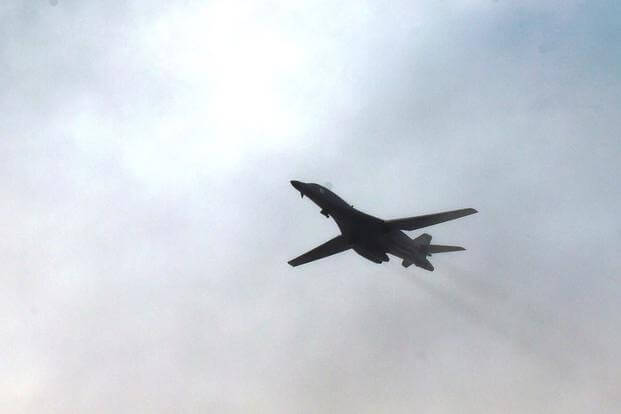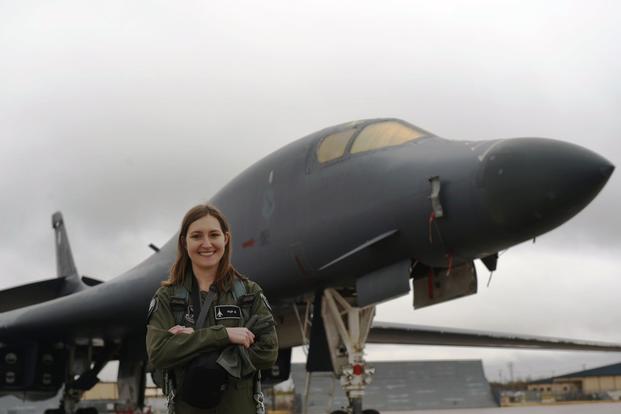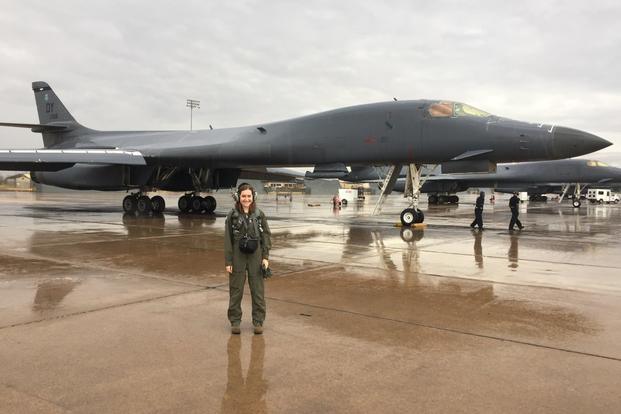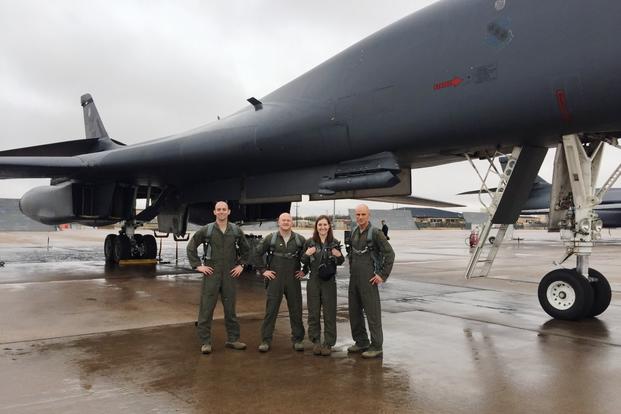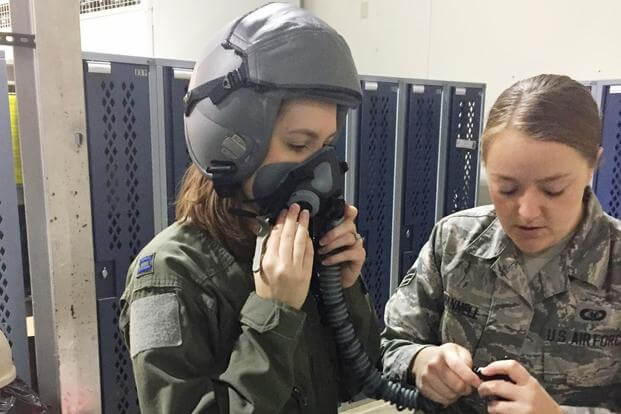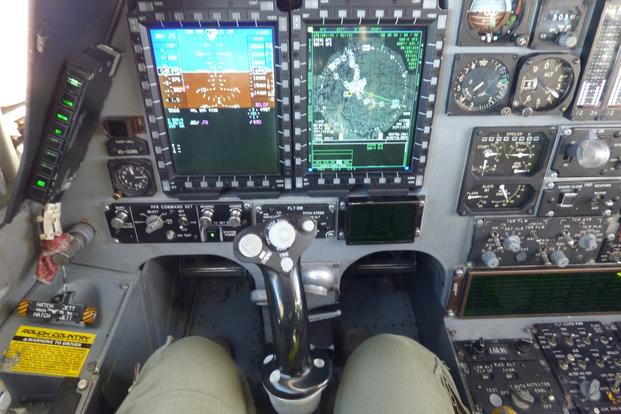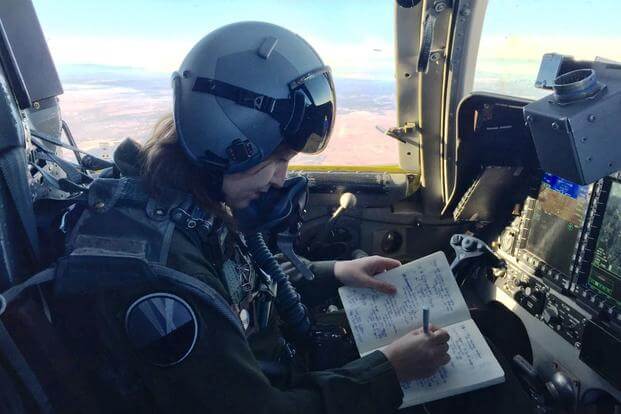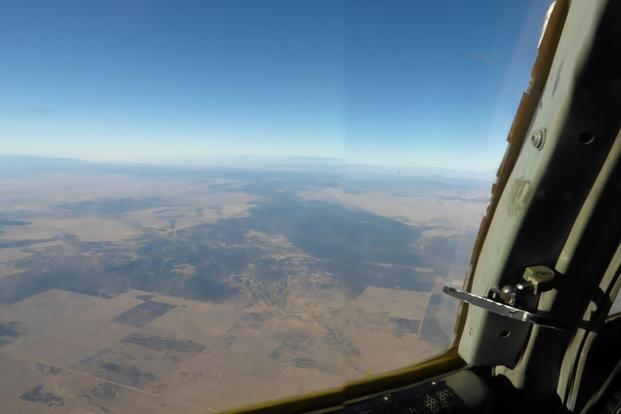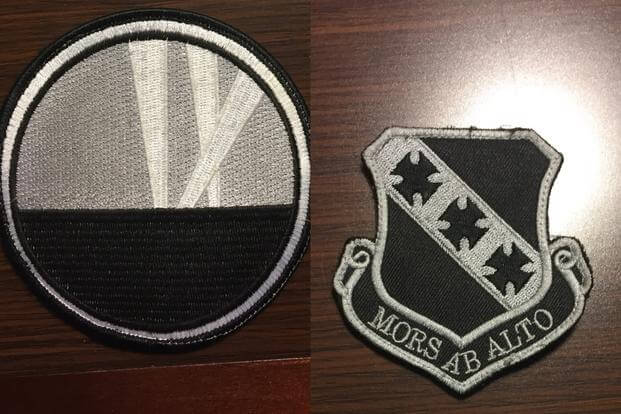DYESS AIR FORCE BASE, Texas -- After flying in Air Force transports, fighters and tiltrotor aircraft within the last year, my flight in a B-1B Lancer was an experience unlike any other.
"It flies like a jet," I said to the 9th Bomb Squadron commander, Lt. Col. Erick Lord (also the weapons system officer sitting in the offensive position in the plane) after climbing down the ladder back onto the ground.
Lord beamed.
The B-1 can climb thousands of feet into the air, but also kick back its wings and dive low, pull a few Gs, and follow the Earth like a jet ski skimming water.
Related content:
- B-1B Aircrews Preparing for Return to the Middle East
- What's on a B-1B Lancer Aircrew's Wish List? Room for More Bombs
- Military.com Soars with the Thunderbirds: Exclusive Video
Its low-altitude terrain-following capability -- at first, a heavily scrutinized skill given that in 1987, the Air Force suspended all low-level flights for the B-1 because of one of its first-ever crashes following a bird strike -- gives crews an advantage: carry and drop like a bomber, but fly like a fighter.
The failsafe sensors on the aircraft when in the TERFLW mode (just a pitch switch on the avionics on the plane) try to pop the aircraft back up.
But the crew keeps it as steady as they can.
"This is to let the jet paint the terrain," said Maj. Charles "Astro" Kilchrist, chief of training for the 9th.
"It's abrupt. It was created to have us sneak in low below enemy radars into Russia during the Cold War, employ nuclear weapons, and get out," he said during the flight over the New Mexico training range known as IR-109 last week. IR-109, located in northern New Mexico, is roughly 300 nautical miles.
"There are about four low-level routes and five military operating areas that we use regularly," said Kilchrist, also a B-1B pilot. "IR-109 is the preferred route for mountainous terrain following, and visual contour training flights."
"It's not soft, not smooth," he said of the terrain follow.
Sitting in the co-pilot seat in tail "088," I was already pretty compact, much like in a fighter seat with a little more wiggle room. Unlike my ride with the Thunderbirds in an F-16, the up-and-down motion in the B-1 felt more like a roller coaster -- making me feel weightless at times or my breakfast coming up at others (still, I kept it down).
But now TERFLW helps the long-range bomber -- which no longer carries nuclear weapons -- hover hundreds of feet above the ground and closely monitor and stalk targets.
That, and shows of force -- conducted just 500 feet off the ground at times -- have the B-1 screeching past the enemy at high speeds.
"That sends a message," Kilchrist said as we flew out.
Here's a video of the B-1B heading out to IR-109, simulating unguided and Joint Direct Attack Munitions weapons drops, descending into TERFLW mode, and popping up into an aileron roll (even though the B-1 doesn't have ailerons, it has spoilers) for this reporter, lucky to take a ride in the "Bone."
And in case you're wondering: yes, there's a toilet, behind the left front seat.
VIDEO:
